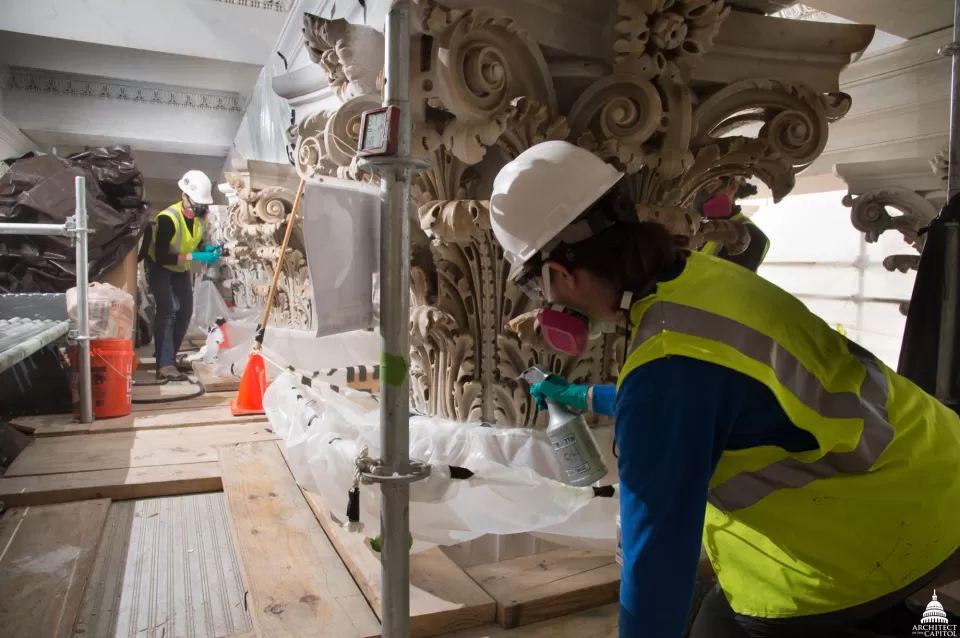Our Stories
Recent Articles
Projects
House Hearing Room Renovation
Rayburn Room 2172 recently underwent renovations that include a refurbished wall-to-wall audiovisual (AV) system, a custom dais and several improved accessibility features.
Projects
A House for All Seasons
More than 140 years later, the Architect of the Capitol's Summerhouse still offers visitors respite. Recent maintenance efforts will help keep the site around for repeat visitors and first timers alike.
Projects
The AOC Never Paints Itself Into a Corner
An in-depth look at the most recent phase of the Capitol Building Paint Analysis and Plaster Repairs project.
Projects
Group Project: The Russell Building Courtyard
The Russell Senate Office Building courtyard was recently restored as a supplement to the Russell Exterior Envelope Project.









Comments
THANK YOU FOR YOUR DEDICATION, ESPECIALLY THE CARVING.
The Capitol dome appears on TV news shows all the time so we've followed the restoration work. It has turned out beautifully; looking markedly better. Well done! Thank you for your work.
Add new comment